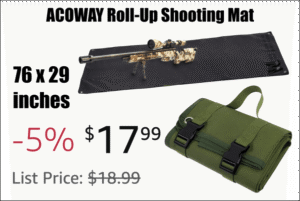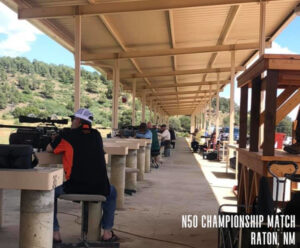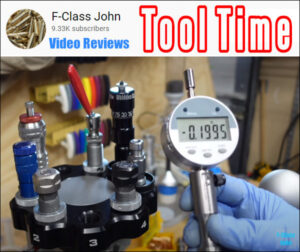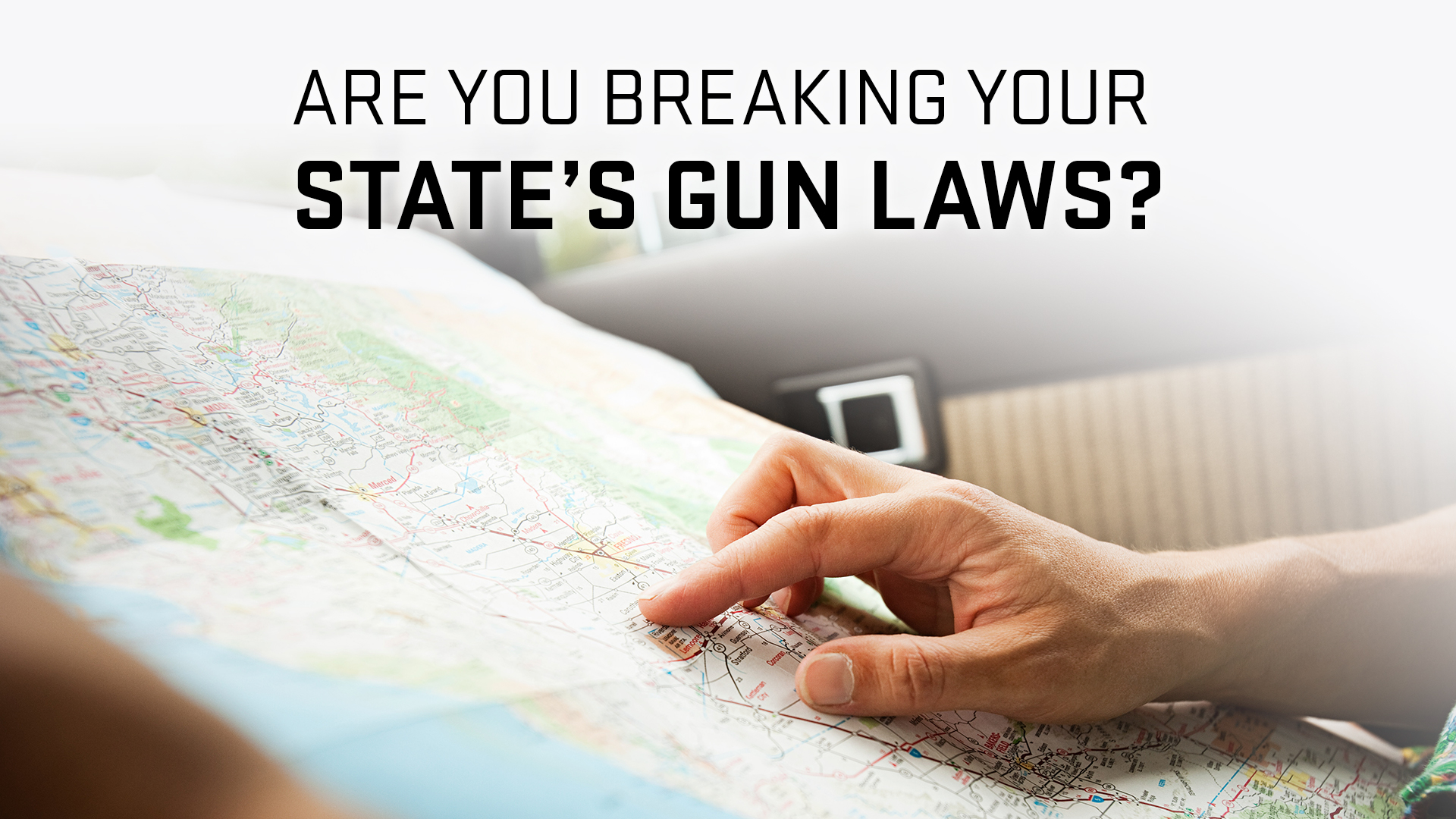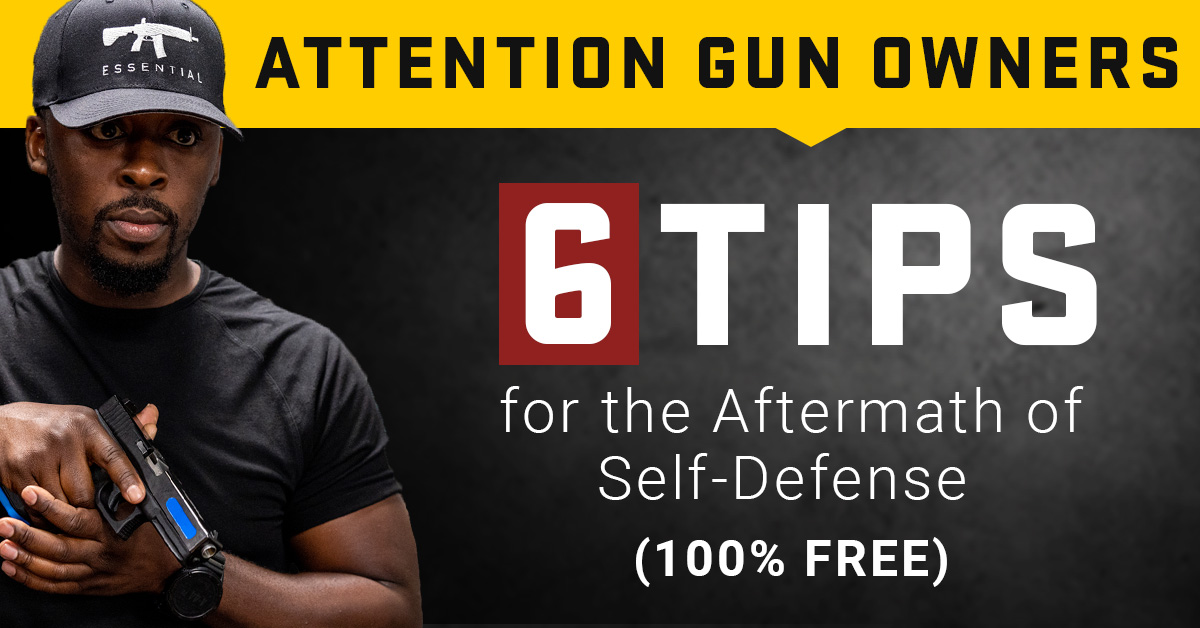Related Articles
This is part of a series of posts that highlight the gear the 200 top-ranked shooters in the Precision Rifle Series (PRS) are running in long-range rifle matches. (Learn about the Precision Rifle Series.) This group of competitors represents the best precision rifle shooters in the country.
This article is Part 1 of a 3-part series where I’ll focus on the reloading equipment and process these guys use to load their match ammo. Here is how I plan to publish this 3 part series:
- Reloading Presses & Dies (this article)
- Reloading Powder Scales
- Reloading Process & Each Step Performed
Subscribe via email or follow me on Instagram to be the first to know when that next article is published.
This article will focus on the reloading press and reloading dies they use to handload their match ammo, including sizing dies and presses, as well as seating dies and presses.
When I surveyed these pro shooters, I asked if they handloaded their own ammo for most of their matches or if they used factory ammo or a custom loading service. Here are the results of that question:

97% of the shooters said they handloaded their own ammo! I’ll share more about what the other 3% use in an upcoming article, but this article will also discuss the reloading presses and dies that these guys use to load their match-grade ammo.
Consistency is everything when it comes to long-range shooting! Groups have to be relatively small, and muzzle velocity has to be very consistent.
Many veteran long-range shooters see the muzzle velocity consistency as one of the best indicators of ammo quality. Most people who are familiar with statistics believe Standard Deviation (SD) is the best measurement of muzzle velocity variation. In fact, Engleman says this plainly: “Extreme Spread (ES) is not a reliable statistical indicator. The best indicator of velocity variations is the standard deviation.” He goes on to explain, “The true extreme spread of a population is about 6 times the standard deviation.” To learn more about standard deviation and statistics of muzzle velocity, check out this article. I literally spent months writing that article in a way that even those who aren’t engineers or math nerds could understand because I feel like it’s important to know as a long-range shooter.
The table below is from ballistician Bryan Litz’s book Modern Advancements in Long Range Shooting Volume 2, and it provides a “summary of what kind of SDs are required to achieve certain long-range shooting goals in general terms”:
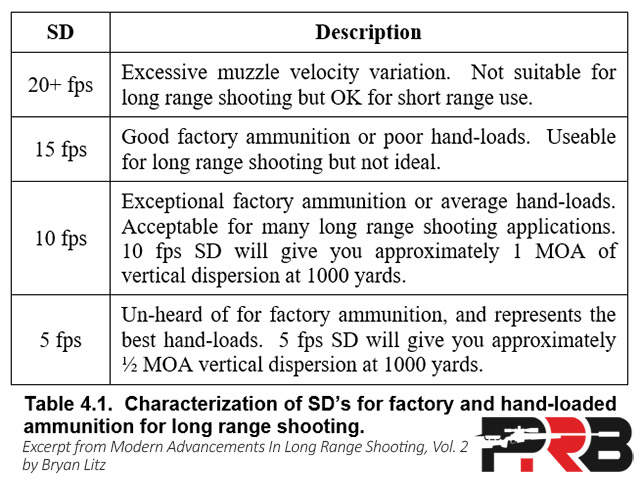
So, an SD of 15 fps results in roughly 15” of vertical dispersion at 1000 yards. That is likely enough to miss a target in a PRS match. A 10 fps SD results in about 10” of vertical dispersion at 1000 yards. While we aren’t typically shooting targets that are smaller than 1 MOA at 1000 yards, that assumes you broke the shot absolutely perfectly, your target range was dead nuts on, your ballistic solution was perfectly calibrated, and the adjustments on your scope’s elevation turret were also perfect. That is a lot of assumptions, which is why most of us who shoot PRS want our ammo to have single-digit SDs to be considered match-worthy. I personally would be okay with ammo that produced an SD of 7 or 8 fps or less, and I don’t think that would cause me to miss any shots at a match. Above that, I get uncomfortable. However, 5 fps is often seen as the gold standard among serious shooters – and lower is always better.
For context, the chart below shows ALL of the SDs reported by this group of top-ranked PRS shooters on my survey. Some cartridges make it easier to load ammo with lower SDs. So I also provided a more detailed breakdown of the SD these guys reported by cartridge, which you can read here.

85% of these shooters are producing ammo that has an SD of 7 fps or less! In fact, 66% are reporting an SD of 5 fps or less! That means these guys know how to produce some of the best handloads possible, which would only have 5” vertical dispersion at 1000 yards!
When it comes to group size, we aren’t necessarily talking about Benchrest rifle groups – but it still has to be precise. 80% of the top-ranked shooters report that their average 5-shot group size is 0.4 MOA or less, with 60% saying their rifle averages 0.3 MOA or less!

So the majority of these shooters say their ammo has an SD of 5 fps or less, and their rifle shoots groups that are 0.3 MOA or less! I hope that gives context for why this group of shooters should be considered experts when it comes to reloading! So, let’s look at what reloading equipment they use to produce extremely consistent ammo that is competitive at the highest levels.
I specifically asked this group what reloading press they used for resizing brass and what reloading press they used for seating bullets because I wasn’t sure how many of them would use the same type of press for both. The chart below provides a breakdown of how many of these top-ranked shooters said they used the same kind of press for both operations and how many used a different brand for sizing than they did for seating:

65% of the pro shooters said they use the same type of press for both sizing and seating, but 35% said they use a different kind of press for seating. We’ll dive into that a little later in this article, but for now, let’s look at what kind of reloading press this group uses for resizing their brass for their match ammo:


The RCBS Rock Chucker reloading press was the most popular sizing press among this group, representing 28% of the 200 top-ranked shooters in the PRS. There were 8 shooters in the top 25 using an RCBS press for sizing, which meant it was also the most popular press among the guys at the very top, too. The RCBS Rock Chucker press seems to be the most common reloading press in existence, but it was interesting to see those at the very top of this list using it to compete at the highest levels of precision rifle shooting. What a compliment to RCBS’s timeless and affordable design! Many companies offer a press with a similar design or have tried to improve on it over the years, but the RCBS Rock Chucker is still the standard. The street price on the RCBS Rock Chucker Supreme press is only $210!
19% of these shooters said they used a Forster Co-Ax reloading press for sizing, including 5 among the top 25. Bill Marr at RifleShooter.com says, “The Co-Ax differs from most single-stage presses in two areas: the shell holder and die insert arrangement. Unlike my old Rock Chucker, you don’t need to invest in a series of different shell holders to work with cartridges; the reversible jaws simply open and close on most common cases without adjustment. Dies simply slide in and out of a notch in the front of a Forster press. No more screwing anything down to ensure your settings stay the same; simply lock the die’s lock ring around its body, adjust the die, and every time you take it in and out of the press, its setting stays exactly the same. This is my favorite part of the Co-Ax!”

There was also 19% using a Dillon press for sizing, including 4 of those in the top 25. Most of the other presses on this list are single-stage presses, but it’s likely this group used a Dillon progressive press. Switching cartridges can be complex (RifleShooter.com refers to switching cartridges on a Dillon 650/750 as “an engineering project”! 😉), but once it’s all setup you can crank out some ammo! I would suspect many of these shooters using a Dillon likely have a dedicated press for their match cartridge that they rarely (if ever) swap to do other cartridges. Most of these guys are likely running the Dillon XL-750, which is an updated version of the XL-650.
The highest-ranked shooter using a Dillon press for resizing brass was Ken Sanoski, who finished 8th overall in the 2023 PRS Open Division season standings. So, I reached out to Ken to ask about what kind of reloading setup he used for his match ammo. Here is what he told me:
“So, I use a Dillon 750 with a Mark 7 Autodrive setup. Honestly, it probably isn’t as consistent as a single-stage press, but I don’t think it makes a difference. It’s consistent enough for me! I typically measure a few when I get started to make sure it’s between 0.0015” and 0.0025” of shoulder bump – then I forget about it. I have around 24,000 cycles on it processing 6 Dasher brass, and I don’t recall checking the bump since I originally set up the die. I’m not much of a perfectionist when it comes to reloading. Honestly, I hate doing it, and my wife loads most of my ammo for me. So the automated setup the Autodrive/Dillon offers is perfect for me.” – Ken Sanoski, 8th Place in Open Division Season Rankings

Ken reported that his 6 Dasher has a 5 fps SD and an average 5-shot group of 0.5 MOA. Sanoski is one of the very best competitors in the world when it comes to precision rifle matches – so maybe we should spend less time perfecting ammo at the reloading bench and more time shooting! 😉
A setup like Ken mentioned with a Dillon 750 + Mark 7 Autodrive combo is priced at $3,963. I will add that while Ken does use a Dillon progressive press to resize his brass, he uses a K&M Arbor Press for seating bullets in his match ammo.

The Area 419 Zero Press had 18% of these shooters using it overall, including 2 among the top 25. The Area 419 Zero Press was designed as a zero-compromise reloading tool. It is a turret-based reloading press that the manufacturer claims: “When indexing the turret, repeatability variance of the system will be less than .0005″. I won’t go into all the details, but the design is pretty insane. But, zero compromises led to a price tag of $1,275 – which makes it the most expensive single-stage press by a long shot.
7% of these top-ranked PRS shooters said they used a Hornady reloading press for sizing, but none of those were in the top 25. Hornady makes a few different kinds of presses, from a classic, single-stage press that is similar to the RCBS Rock Chucker to an advanced progressive press. Unfortunately, I didn’t ask these guys what model they were using.
Redding reloading presses had 5% represented overall, with 2 in the top 25. Redding is an extremely popular die manufacturer, so it’s not surprising to see several of these pro shooters using a Redding press. Redding makes several types of presses. The Redding T-7 Turret Press is a very popular option and was what Area 419 staff were using for years before they developed the Area 419 Zero Press. The guys at Area 419 are very big on tooling, and the Redding T7 press is what made them such big fans of a turret press design. So if you can’t swing the $1275 for the Area 419 Zero, the $395 Redding T-7 Turret Press might be a great alternative. Another popular option is the Redding Big Boss II Single-Stage press for $295, which is basically an improved version of the RCBS Rock Chucker. Last year, I interviewed two-time PRS Champion Austin Orgain and asked about his reloading setup and process. Orgain uses a Redding Big Boss 2 Press with the Inline Fabrication Case Ejection System (his setup shown below). Read about Austin Orgain’s full reloading setup and process.

Lee had 2% overall but had 2 in the top 25! One of those in the top 10 using a Lee press was Austin Buschman, who recently won his 2nd IPRF World Championship. Buschman was also the 2022 PRS Champion. Last year, I interviewed Buschman about his complete reloading setup (shown below), and he explained it in detail, including why he loved his Lee 4-Hole Classic Turret Press. Honestly, Buschman’s whole approach to reloading was fascinating, and you can read that here.
The MEC Marksman Reloading Press, German-Made Präzipress, Mark 7 Commercial Reloading Press, and Frankford Arsenal all had 1% of these shooters, but none of those were in the top 25. One shooter who was using the Frankford Arsenal specifically said it was the “Frankford Arsenal M-Press Coaxial,” which looks like a similar design to the Forster CoAx.
Pro Tip: Inline Fabrication’s Case Ejection system is an accessory that can be added to most reloading presses, and it will effectively double your throughput when sizing brass. This system ejects your cases from the press for you, allowing you to leave your right hand on the press lever and your left hand dedicated to feeding brass. The ejector parts for most presses are around $40, or you could buy a kit that includes a mounting system with bins for $60. I’d say it might be the best money I’ve ever spent on reloading equipment! I literally won’t own a single-stage press that doesn’t have an option for this accessory because it is a game-changer.
They also make the reloading press stands called the Ultramount that you see in many of the photos in this article, which get the press closer to eye level. Honestly, they make a ton of great accessories for those of us that reload. They’re of no affiliation to PRB, and I don’t even know the guys – but I buy a lot of their stuff! 😉
Before we dive into the sizing dies, I will say that 94% of these top-ranked shooters full-length size their brass every time. There are other precision rifle disciplines that might only neck-size their brass, but keep in mind that all of these matches are in field conditions (not indoors or even off a bench on a square range). Many matches can get pretty dusty, so having ammo that has adequate clearance to chamber reliably is one of the highest priorities. I plan to provide a more detailed breakdown in an upcoming article, which will focus on their reloading process, but I thought that was worth mentioning here, too.
Now let’s look at what brand of sizing die these top-ranked shooters are using for their match ammo:


There was a staggering 43% of these top-ranked PRS shooters using a Short Action Customs (SAC) modular sizing die, including 50% of those in the top 10 and 52% of the top 25!
SAC dies have a very unique die design. PRS Champ and two-time IPRF World Champion Austin Buschman says this about them: “I like that the SAC die sizes just the perfect amount all the way down to the base of the case,” Austin said. Different brands of dies vary in terms of how much they size the case closer to the base. SAC explains, “Our modular sizing dies sizes more at the base and less at the shoulder compared to traditional resizing dies.”
Buschman: “The SAC sizing dies also have a neck/shoulder bushing, which seems like a cool idea.” A die bushing allows you to fine-tune or customize how much it sizes the neck of the case. Most other bushing dies, like Redding or Whidden, only have a bushing that sizes the neck. Often, that means the neck bushing doesn’t size 10% of the way to the neck/shoulder junction. But, the SAC die bushing sizes the neck and shoulder with one integral bushing, so it sizes 100% of the neck.


Austin Buschman full-length sizes his brass using this SAC die and bumps the case shoulder back 0.003” every time he reloads a case. Buschman: “I shoot a lot of dusty, dirty matches in Oklahoma, and if you get a little bit of dust in your chamber and your brass isn’t sized quite a bit, you just can’t always close the chamber on it.” When it comes to reloading ammo, Austin’s highest priority is reliability. (Read about Austin Buschman’s complete reloading process and equipment.)
SAC modular sizing dies are priced at $295.
17% of these pros use Redding sizing dies, including 4 in the top 25. The Redding Full-Length Bushing Sizing Die (shown next to the SAC die in the diagram above) was the gold standard for sizing dies among competitive PRS shooters for the longest time. While new brands and designs have entered the market over the past 3 years, it’s not surprising to see Redding still well-represented. These Redding full-length dies have a street price of around $82.

11% were using Bullet Central Micron Precision bushing sizing dies, including 3 in the top 25. This is another relatively new design. Two-time PRS Champion Austin Orgain told me that he’s used several different kinds of dies over the years but said he’s recently started using the Micron Precision Bushing Sizing Dies from Bullet Central. Orgain: “I’ve been really liking those dies. They seem really well built and are nice dies. I will use those to decap and full-length size a case in one operation.” (Read more about Orgain’s reloading equipment and process, including more on these Micron Bushing Sizing dies.)
Micron Precision Bushing Sizing Dies from Bullet Central are priced at $275.
Those 3 brands (Short Action Customs modular sizing dies, Redding dies, and Bullet Central’s Micron Precision dies) represent what 71% of these top-ranked shooters were using. Behind those, there were a few shooters using these other brands of sizing dies:
- 8% RCBS sizing dies
- 7% Forster sizing dies
- 5% Whidden sizing dies
- 3% Hornady sizing dies
- 2% LE Wilson sizing dies
- 2% Custom sizing dies (none within the top 50)
- 1% Harrell’s sizing dies (none within the top 50)
- 1% Area 419 Zero M-Series sizing dies (none within the top 50)
Let’s move on to the reloading equipment they use to seat their bullets. I specifically asked what press they use for seating bullets because I was curious how many shooters were using an arbor press.
What is an arbor press? An arbor reloading press is a specialized tool used primarily by Benchrest and long-range shooters to seat bullets with extreme consistency and accuracy. Unlike traditional reloading presses, arbor presses use a simple “arbor” (or lever) mechanism, applying precise downward pressure directly on the die. Compared to traditional reloading presses, an arbor press setup is simple and minimalistic, which many believe reduces the potential for error and helps produce more uniform rounds.

The chart below shows what reloading press these guys said they were using to seat the bullets in their match ammo:

20% were using an RCBS Rock Chucker reloading press for seating bullets, including 2 in the top 25. It’s a little interesting to see that 28% of these shooters used an RCBS press for sizing, but only 19% used one for seating.
Only 2% behind RCBS was the Forster Co-Ax reloading press, which 18% of these shooters were using, including 8 in the top 25. That makes them the most popular reloading press for seating among those at the very top of the leaderboard.
17% were using the Area 419 Zero Press for seating bullets, including 2 in the top 25.
11% were using a Dillon press to seat bullets, including 1 in the top 25.

8% were using a K&M Arbor Press to seat bullets, including 4 in the top 25. That makes the K&M Arbor Press the most popular arbor press among this group. One of those shooters was in the top 10 (#8 Ken Sanoski).
One interesting note from my interview last year with Austin Orgain is that he said he had been switching between seating bullets on a couple of different presses: a K&M Precision Arbor Press and a Forster Co-Ax Reloading Press: “I’ve been using a Wilson bullet seating die with my arbor press for my 25 GT ammo, which is what I’ve been running lately at competitions. For my 6 Dasher, I sometimes load it on an arbor press and sometimes seat my bullets using a Forster Coax. You can feel the seating pressure a lot easier with an arbor press – but I can’t say that I’ve noticed any difference in terms of accuracy or consistency from the ammo I seated with an arbor press or my Forster Co-Ax.”
7% were using a 21st Century Shooting Arbor Press, including 1 in the top 25.
The brands above represented what 80% of these pro-level shooters were using, but the remaining shooters were spread over several other presses:
- 5% Hornady Reloading Press
- 4% Redding Reloading Press (includes 1 in top 10)
- 3% Sinclair Arbor Press (includes 1 in top 10 + 1 in top 25)
- 1% Lee Reloading Press (includes 1 in top 10)
- 1% AMP Press (this is an arbor press)
- 1% Frankford Arsenal Reloading Press
- 1% MEC Marksman Reloading Press
- 1% Lyman Reloading Press
- 1% Short Action Customs Nexus Reloading Press
- 1% LE Wilson Reloading Press
Based on all of that data, it looks like around 20% of these shooters use an arbor press to seat their bullets. There are also very few who use a progressive press. The overwhelming majority use a single-stage reloading press to seat their bullets.

26% of these top-ranked shooters were running a Short Action Customs seating die to make their match ammo, including 4 in the top 25. That means Short Action Customs dies were the most popular sizing AND seating die!
SAC named this “The” Seating Die. You must be pretty confident to name a product that! Here is what they say:
“The” Seating Die is designed to be the ONLY bullet seating die you will ever need for a family of cartridge bodies. Imagine being able to easily and precisely being able to seat bullets from a 22 Creedmoor, 6 BR, 6.5 Creedmoor, and 308 Winchester, all with the same die. Or a 6.5 SAUM, 28 Nosler, and a 300 RUM with the same die. “The” Seating Die will be your one-stop shop for a family of cartridges.

Basically, you can buy one seating die that can fit multiple cartridges with the same body diameter. Each die comes with a few different stems and spacers that you can mix and match to seat bullets for any of the cartridges in that family. Here are two examples of popular seating die types along with the cartridges the same die could be used for:
| Type 4 (Any 308 Win Based Cartridges with .480″ body diameter) 22 / 6 / 25 / 30 BR22 / 6 / 25 BRA22 / 6 / 25 BRX22 / 6 / 25 Dasher22 / 6 / 25 / 6.5 / 30 x 47 Lapua22 / 6 / 25 / 30 GT22 / 6 / 25 / 6.5 / 7 / 30 Creedmoor22-243 / 243 / 260 / 7mm-08 / 308 Winchester6XC.303 British22-2508.6 Blackout | Type 6 (Belted Magnums and PRCs with .535″ body diameter) 300 Winchester Magnum7 Remington Magnum6.5 PRC7 PRC300 PRC7 LRM264 Winchester Magnum264 Weatherby Magnum270 Weatherby Magnum7 Weatherby Magnum300 Weatherby Magnum |
SAC’s “The” Seating Die includes a Mitutoyo micrometer to finely adjust your bullet seating depth. Mitutoyo is seen by many as one of the premier manufacturers when it comes to precision tools. SAC leverages several technical strategies to ensure the die has a very concentric and true assembly.
SAC’s seating die is priced at $375.
The 2nd most popular brand of seating dies used by these pro shooters was Redding seating dies at 18%, including 2 in the top 25. While I didn’t ask what specific model they used, I’d bet virtually all of them were using a Redding Competition seating die, which has a built-in micrometer to make fine and precise adjustments to bullet seating depth. Redding Competition Seater Dies have a street price from $158 to $245, which varies from cartridge to cartridge based on popularity.

15% were using an LE Wilson Bullet Seater die, including 6 in the top 25 – making it the most popular seating die among those in the top 25. Two of those shooters were actually in the top 10. This is the most popular die that is used with an arbor press and is considered by many as the gold standard for seating bullets on an arbor press.
13% were using Forster seating dies, including 5 in the top 25.
11% were using RCBS seating dies, but none of those were in the top 25.
The brands above represent what 83% of these shooters were using, and the remaining 17% were spread over a variety of brands of seating dies:
- 5% Bullet Central Micron Precision Seating Dies (Including 1 in the top 10)
- 4% Whidden Micrometer Seating Dies (Including 1 in the top 10)
- 4% Hornady Seating Dies (None in the top 25)
- 2% Custom Seating Dies (1 in the top 10 and another in the top 25. They didn’t specify what type of custom die it was.)
- 1% Harrell’s Seating Dies (1 in the top 10)
- 1% Frankford Arsenal Seating Dies (None in the top 25)
If you enjoyed this content, I’ve already pushed dozens of articles just like it! Check out the other “What The Pros Use” articles that have already been published this year.
As mentioned, this was Part 1 of a 3-part series where I’ll focus on the reloading equipment and process these guys use to load their match ammo. Stay tuned for the next 2 installments, which will be published very soon:
- Reloading Presses & Dies (this article)
- Reloading Powder Scales
- Reloading Process & Each Step Performed
Be the first to know when the next What The Pros Use article is published by signing up for email alerts.
If you’d like to help PRB, here are ways you could do that:
No pressure – but it does cost quite a bit to support the amount of traffic PRB gets, and I spend quite a bit of time creating all this content. If you get value from the content and would like to donate, I promise 100% of it will go towards keeping this thing going!
It would help me out if you’d share a link to this article on Facebook and your favorite rifle forums so more people can benefit from the content.
© Copyright 2024 PrecisionRifleBlog.com, All Rights Reserved.












